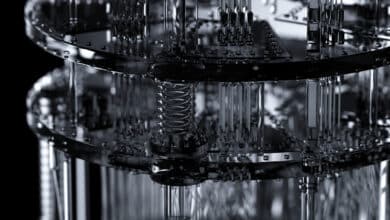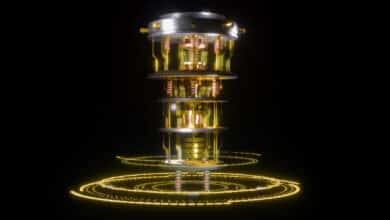Quantum Parallelism in Quantum Computing: Demystifying the “All-at-Once” Myth

Table of Contents
Many enthusiasts have heard that quantum computers can “try all solutions at once” thanks to mysterious quantum effects. I recall a developer at a meetup excitedly proclaiming that a qubit in superposition could test every possible input simultaneously, as if quantum superposition itself were magical parallel processing. This common confusion between quantum superposition and quantum parallelism is understandable – the concepts are related, but they’re not identical. In this article, we’ll try to demystify the distinction. We’ll see how superposition is the physical principle that lets a qubit be in many states at once, while quantum parallelism is what allows a quantum computer to compute many possibilities at once.
Superposition: A Qubit in Many States at Once
To understand quantum parallelism, we must first grasp quantum superposition – the enigmatic ability of quantum systems to occupy multiple states simultaneously. Unlike a classical bit, which is definitively 0 or 1, a qubit can be in a state that is a combination (superposition) of 0 and 1 at the same time. A common metaphor is a spinning coin: while spinning, is it heads or tails? In a sense, it’s both until you catch it. Similarly, a qubit can be, say, 50% in state |0⟩ and 50% in state |1⟩ (we’d write this as $$|\psi⟩ = \frac{1}{\sqrt{2}}(|0⟩ + |1⟩)$$). As long as we don’t measure it, the qubit exists in a superposition of both possibilities. This idea defies our everyday logic – we’re used to definite states – but it’s been confirmed by countless experiments. Even multiple qubits can be in a joint superposition of many combinations of 0s and 1s at once. For example, 3 qubits can be put in an equal superposition of all $$2^3=8$$ basis states ($$|000⟩, |001⟩, …, |111⟩$$) simultaneously. It’s like a musical chord playing several notes together instead of a single note – an apt metaphor, because superposed states can interfere with each other much like overlapping sound waves.
Crucially, when you measure a qubit, this spell of ambiguity breaks – the qubit collapses into one of its basis states (you get either 0 or 1 as a result). The outcome is probabilistic, with probabilities given by the “weights” of the superposition (the amplitudes squared). To stick with our coin analogy, observing the spinning coin forces it into heads or tails. In quantum terms, the superposition $$\frac{1}{\sqrt{2}}(|0⟩+|1⟩)$$ might collapse to |0⟩ 50% of the time and |1⟩ the other 50%. This measurement rule is why superposition alone doesn’t automatically give us useful computation – if you just prepare a superposition and measure, you get a random outcome from among the possibilities. Nevertheless, superposition is the bedrock of quantum computing: it provides a rich canvas of parallel possibilities that quantum algorithms can work with. In other words, superposition is the enabler – now let’s see how we turn it into actual parallel computation.
Quantum Parallelism: Many Computations at Once
Quantum parallelism refers to a quantum computer’s ability to evaluate or explore many computational paths in parallel, by exploiting superposition. It’s not a separate physical phenomenon from superposition, but rather a computing technique made possible by superposition. The key idea is this: if a quantum system can be in a superposition of many input states, and you design a process (a quantum circuit or “oracle”) to act on those states, then in one operation the system evolves as if it were computing all those inputs at the same time. This is where the “try all solutions simultaneously” intuition comes from – it’s basically true up to a point. A famous description by David Deutsch (one of the founders of quantum computing) is that a quantum computer can carry out a vast number of computations at once, a phenomenon he termed quantum parallelism.
To make this more concrete, imagine we have a magic quantum subroutine (an oracle) that computes some function $$f(x)$$. Classically, if you want to know $$f(x)$$ for various values of $$x$$, you have to run the computation separately for each input. Quantumly, however, you could prepare a superposition of inputs. For example, with $$n$$ qubits you can create a superposition of all $$N=2^n$$ binary strings as input states:
$$$\frac{1}{\sqrt{N}}\sum_{x=0}^{N-1} |x⟩$$$
Now send this state through a quantum circuit that implements the function $$f$$. In one fell swoop, the unitary operation $$U_f$$ encoding the function acts on every component of the superposition in parallel, yielding an output superposition of all corresponding $f(x)$ values:
$$$\frac{1}{\sqrt{N}}\sum_{x=0}^{N-1} |x⟩;|0⟩ ;\xrightarrow{;U_f;} ;\frac{1}{\sqrt{N}}\sum_{x=0}^{N-1} |x⟩;|f(x)\rangle$$$
Voila – the function has been “evaluated” for all $$x$$ in a single step. This is the essence of quantum parallelism. It’s as if we had $$N$$ classical processors computing in parallel, but here those $$N$$ “parallel computations” reside as terms in one quantum state. For example, operating on a 10-qubit register can affect up to $$2^{10}=1024$$ different states (amplitudes) simultaneously – a task that would require 1024 separate classical processes working in parallel.
However – and this is vital – getting useful information out of that superposition is tricky. If you measure the output state above, you don’t get a list of all $$f(x)$$ values; you’d just get one random $$(x, f(x))$$ pair. This is why quantum parallelism isn’t a free lunch. The magic only becomes useful when combined with clever interference before measurement to make the outcome encode some global property of those many computations. We’ll jump into that soon, but first, let’s highlight the difference between superposition and parallelism in simple terms:
- Superposition is a state – like a chord containing multiple notes – and by itself it doesn’t give an answer, it just holds multiple possibilities.
- Quantum parallelism is about processing – playing all those notes at once and letting them interfere, such that when you finally listen (measure) you hear a meaningful chord, not just noise. It requires an algorithmic structure on top of superposition.
In short, superposition enables quantum parallelism, but parallelism is realized only when an operation leverages the superposition to explore multiple paths at once. Many popular explanations (and admittedly some marketers) blur this line, giving the impression that a qubit in superposition automatically means “exponential speedup.” The reality is subtler: yes, a quantum computer can compute on many states simultaneously, but you have to choreograph things so that you can later extract a useful result from those many states.
A Brief History: Early Visions of Quantum Parallelism
The idea that quantum mechanics could revolutionize computing has roots dating back to the 1980s. Richard Feynman famously sparked the field when he pointed out the difficulty of simulating quantum systems on classical computers. In a 1981 lecture, he mused that “Nature isn’t classical, dammit, and if you want to make a simulation of nature, you’d better make it quantum mechanical.” In other words, to handle the parallel complexity of quantum physics, you might need a quantum computer. Feynman’s insight (published in 1982) is often regarded as the beginning of quantum computing – he essentially proposed using quantum parallelism (though he didn’t call it that yet) to simulate nature’s own parallelism.
Building on such ideas, David Deutsch in 1985 formulated the first description of a universal quantum computer – the quantum analog of a Universal Turing Machine. Deutsch explicitly discussed how a quantum computer could superpose computations and thereby evaluate many possibilities at once. He even introduced a simple algorithm (now called Deutsch’s algorithm) that in one quantum evaluation could determine a global property of a function that would require two evaluations classically. This was later generalized into the Deutsch–Jozsa algorithm (1992), one of the first clear demonstrations of quantum parallelism in action. The Deutsch–Jozsa algorithm asks: given a hidden Boolean function $$f$$ that is guaranteed to be either constant (same output for all inputs) or balanced (half 0’s and half 1’s), can we determine which with fewer queries than a classical computer? Classically, if you have $$N$$ possible inputs, you’d need up to $$N/2+1$$ queries in the worst case. Quantumly, Deutsch–Jozsa solves it with one query, by querying on a superposition of all inputs and then using interference to check if the outcomes were all equal or not – a lovely example of quantum parallelism providing a speedup.
By the mid-1990s, quantum parallelism really hit the limelight with two groundbreaking algorithms: Shor’s factoring algorithm and Grover’s search algorithm. These showed that quantum computers (if sufficiently large and error-corrected) could outperform classical ones for some real-world problems. Let’s see how they use quantum parallelism – and equally importantly, how they deal with the measurement issue.
Quantum Parallelism in Action: Shor’s and Grover’s Algorithms
Shor’s Algorithm (1994) is the poster child of quantum computing, famous for factoring large numbers exponentially faster than any known classical method. Peter Shor’s key insight was to reduce factoring to a problem of period-finding in arithmetic. Without going into too much detail, a core step of Shor’s algorithm involves computing a function like $$f(a) = r^a \bmod N$$ for a whole range of exponents $$a$$ in superposition. Using quantum parallelism, the algorithm computes $$f(a)$$ for all relevant exponents $$a$$ simultaneously in one quantum circuit. This creates a giant superposition of states encoding many $$(a, f(a))$$ pairs. Of course, if we measured at that point, we’d only see one random pair – not helpful! So instead, Shor’s algorithm then performs a quantum Fourier transform on that superposition. The quantum Fourier transform is essentially an interference step – it mixes all those parallel computations in a way that constructively interferes the amplitudes when $a$ values differ by the period of the function, and destructively interferes everything else. The result (with high probability) is that measuring the register after the Fourier transform yields a value related to the unknown period. Once the period is known, classical number theory can reveal the factors of $$N$$. This interference-driven finale is why Shor’s algorithm succeeds: it turns raw parallel computation into a single, meaningful answer. In summary, Shor’s algorithm uses quantum parallelism to perform modular exponentiation and interference to extract the period of a function, cracking the factoring problem that RSA encryption relies on. It’s a tour de force of quantum parallelism.
Grover’s Algorithm (1996) tackles a different challenge: searching an unstructured database. Suppose you have $$N$$ possible items and one of them is the “marked” item you’re looking for (think of trying to find a specific name in an unsorted phone book). A classical search takes $$O(N)$$ time in the worst case, as you might have to check each item. Grover’s algorithm uses quantum parallelism and interference to achieve a quadratic speedup, $$O(\sqrt{N})$$. It works by starting with a superposition of all $$N$$ possibilities (so initially each item has equal amplitude, like $$\frac{1}{\sqrt{N}}\sum_{x}|x⟩$$). Then a process called amplitude amplification is repeated: it involves a quantum oracle that “marks” the correct item by flipping its phase, followed by a diffusion operation that makes all amplitudes “rebound” about the average. Without getting lost in the mechanics, the effect is that after a few iterations, the amplitude of the correct state grows significantly while the amplitudes of incorrect states diminish. This is interference at work: the wrong answers’ probability amplitudes cancel each other out in part, and the right answer’s amplitude reinforces itself. After enough iterations (about $$\pi/4\sqrt{N}$$ iterations, to be precise), the correct item’s amplitude is close to 1, and a measurement will return the correct answer with high probability.
Grover’s algorithm is a great example of how quantum parallelism is powerful but not almighty. It indeed evaluates the oracle function on all 8 states in the above example simultaneously, but we still had to perform multiple iterations and use interference to amplify the answer. The end result is a quadratic speedup, not an exponential one – nothing to scoff at, but also a reminder that not every problem yields easily to quantum parallelism. In fact, Grover’s $$O(\sqrt{N})$$ search is proven optimal for unstructured search, and it suggests that problems like NP-complete optimization won’t be trivial for quantum computers (as far as we know). The algorithm’s widespread applicability (any brute-force search can potentially be sped up quadratically) is why it’s considered the second-biggest quantum algorithm milestone after Shor.
The Power and Pitfall of Parallelism: Interference and Measurement
At this point, you might wonder: if quantum parallelism lets us evaluate $$2^n$$ possibilities in one go, why can’t we just measure the quantum state and read out all the answers? This is the crux of why quantum parallelism doesn’t directly equal a solve-everything superpower. The act of measurement collapses the quantum state to a single outcome, so if we naïvely try to have a quantum computer “try all $$2^n$$ inputs at once,” we only get one random result out upon measurement. Scott Aaronson (a prominent computer scientist) often emphasizes this point: even though, in some interpretations, you could say a quantum computer explores many branches or “many worlds” in parallel, you don’t get to peek into all those branches individually. As he wryly notes, if a quantum computer somehow accessed exponentially many parallel universes, it “returns a random answer from one of the universes” – hardly useful unless we do something smart !
That “something smart” is interference. Just as waves can interfere to form patterns of peaks and troughs, quantum amplitudes (which are like probability wave amplitudes) can interfere. Algorithms like Shor’s and Grover’s are carefully designed so that all those parallel computations interact through interference, reinforcing the correct results and canceling out the incorrect ones. This is analogous to the famous double-slit experiment in physics, where a particle going through two slits creates an interference pattern on a screen – the peaks of the pattern are places where two possible paths’ waves reinforce each other, and the dark fringes where they cancel out.
In quantum computing, we arrange gates and oracles such that, by the end of the computation, the answer we seek is encoded in the quantum state with high probability, while other possibilities have mostly canceled away. This is why quantum parallelism is powerful yet subtle: you get this enormous parallel exploration of the solution space, but you must cleverly orchestrate it to yield one readable answer in the end. If you disturb the qubits mid-computation (through unintended interaction or premature measurement), their delicate superposition collapses and you lose the parallelism benefit. In fact, maintaining coherence (isolation from environment) is a major experimental challenge – as we saw, any “measurement-like” disturbance forces the qubits into a single state, wrecking the quantum parallelism. This need for coherence is one reason building quantum computers is hard.
Another reason quantum parallelism isn’t a cure-all is that not every problem has a known quantum algorithm that can effectively use interference to beat classical algorithms. Shor’s algorithm gave an exponential leap for factoring, and Grover’s a quadratic one for search, but for many problems (like arbitrary NP-complete problems) we don’t have known quantum algorithms that give exponential advantages. In complexity theory terms, we believe $$BQP$$ (the class of problems solvable efficiently by quantum computers) is large, but it’s not believed to contain every hard problem. So quantum parallelism must be seen as a resource to be harnessed with care, not a guarantee of unlimited speed. As one quantum computing researcher put it, quantum computers don’t just “try all answers at once” and magically pick the right one – instead, they cleverly bias the odds in favor of the right one via interference.
Conclusion
Quantum parallelism is often described in almost mystical terms – exponential computations happening in parallel in the multiverse! – but as we’ve explored, it boils down to the concrete physics of superposition and interference. A quantum computer superposes many states and processes them together, leveraging the wave-like nature of quantum amplitudes to sift out the answer we want. It’s like having an insanely massive parallel computer, but one that only yields useful output if programmed in just the right way. This duality is what makes quantum computing both exciting and challenging.
On one hand, as Feynman and Deutsch envisioned, quantum parallelism lets us tackle problems in ways impossible for classical serial computers. We’ve seen how it underpins algorithms that can factor integers vastly faster than known classical methods, or search a haystack faster than any classical needle-in-haystack routine. In academic terms, “quantum algorithms use superposition, entanglement, and quantum parallelism to process information in ways that classical algorithms cannot.” On the other hand, we must remember the role of measurement: a quantum computer ultimately has to give a classical answer, and getting that answer reliably requires the quantum interference dance. If superposition is the orchestra of quantum computing, interference is the conductor that brings the symphony to a crescendo, collapsing into one beautiful solution.
The takeaway is this: quantum parallelism is real and powerful, but it’s not just about being in many states at once – it’s about using that multiplicity to compute in a fundamentally different way. Superposition is the canvas, parallelism is the painting, and interference is the artist that makes the image appear. By demystifying these concepts, we step away from the hype and closer to understanding how quantum computers actually work – and why they’re worth the effort.
Quantum Upside & Quantum Risk - Handled
My company - Applied Quantum - helps governments, enterprises, and investors prepare for both the upside and the risk of quantum technologies. We deliver concise board and investor briefings; demystify quantum computing, sensing, and communications; craft national and corporate strategies to capture advantage; and turn plans into delivery. We help you mitigate the cquantum risk by executing crypto‑inventory, crypto‑agility implementation, PQC migration, and broader defenses against the quantum threat. We run vendor due diligence, proof‑of‑value pilots, standards and policy alignment, workforce training, and procurement support, then oversee implementation across your organization. Contact me if you want help.



